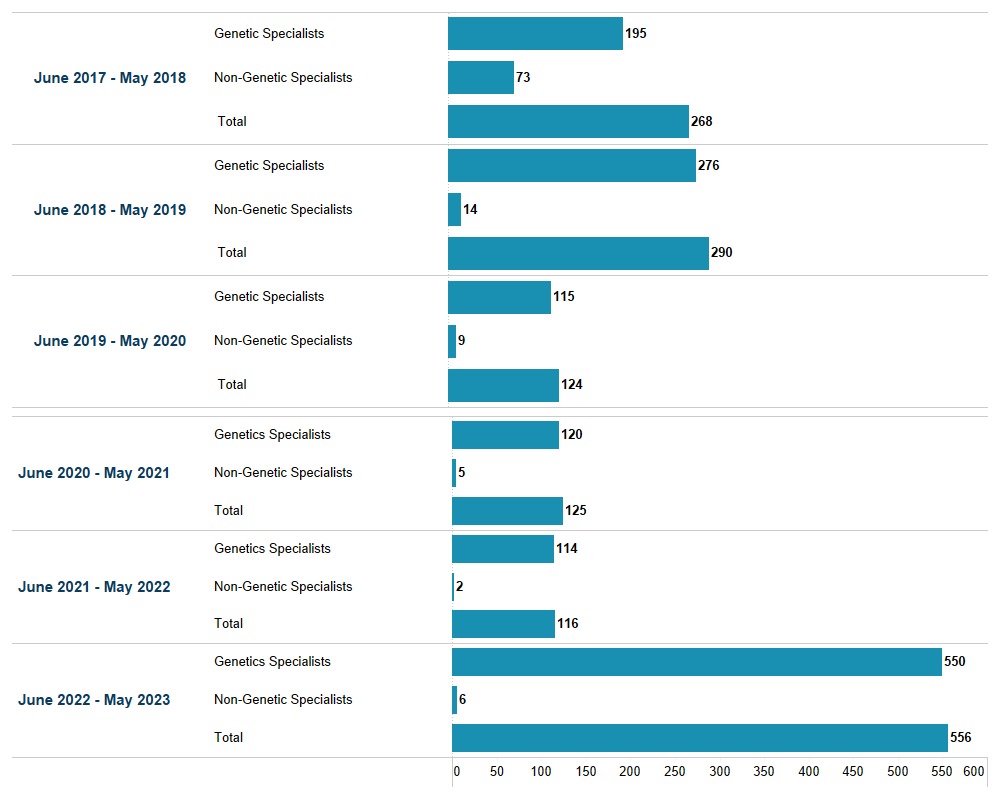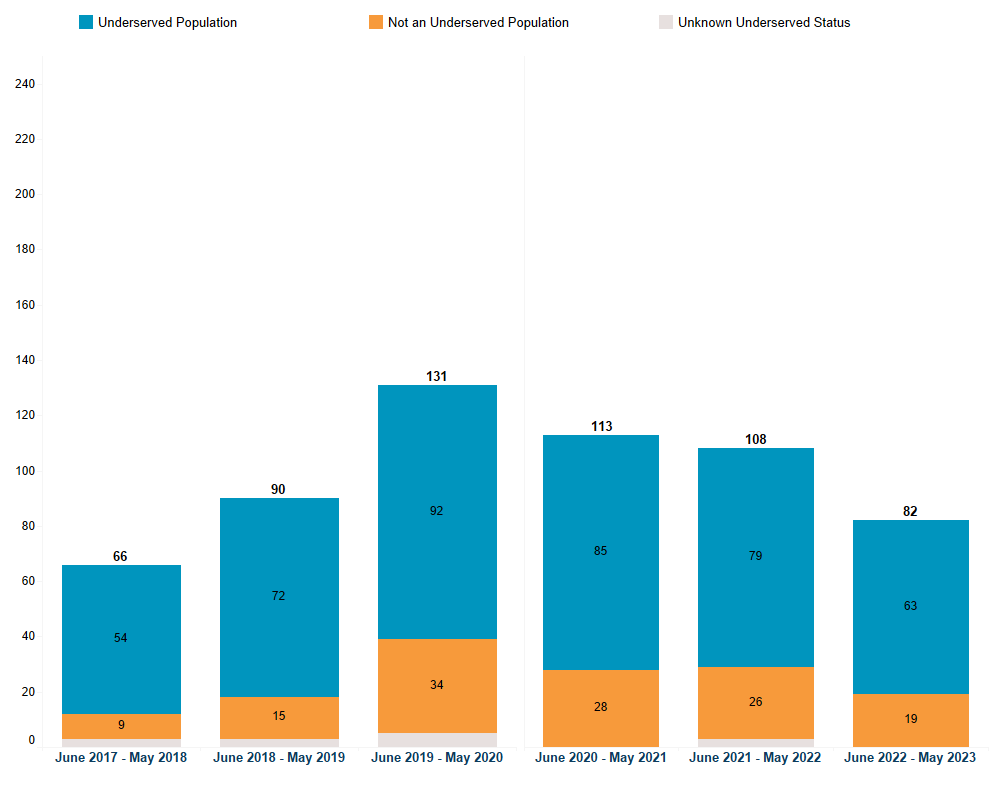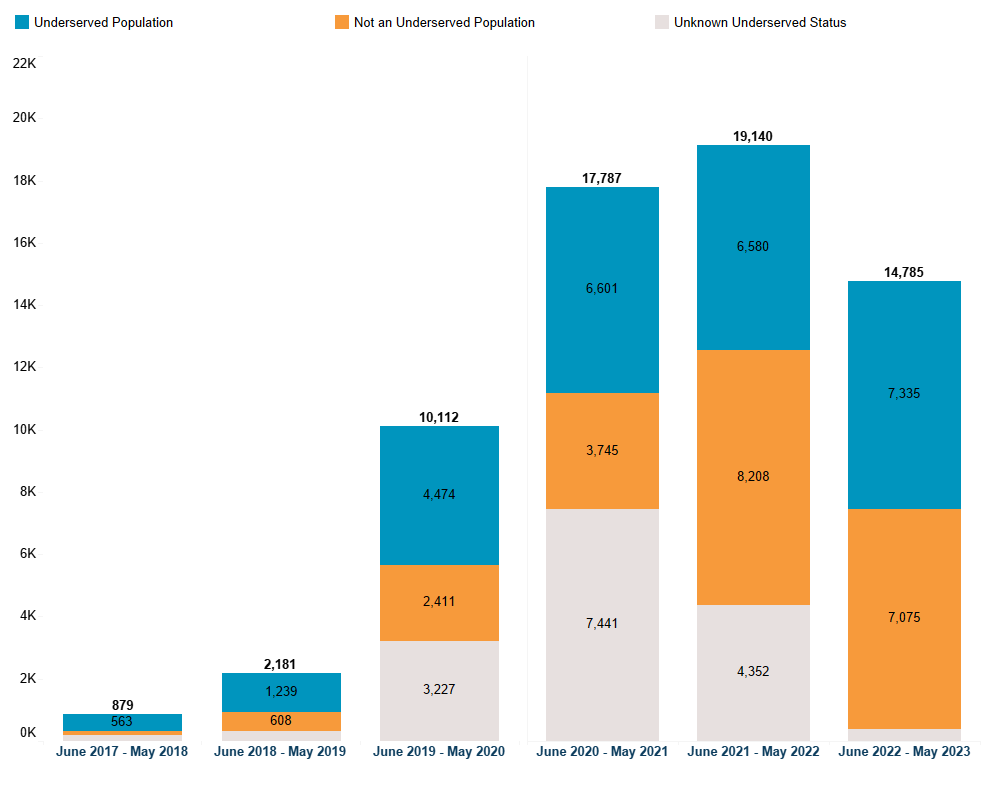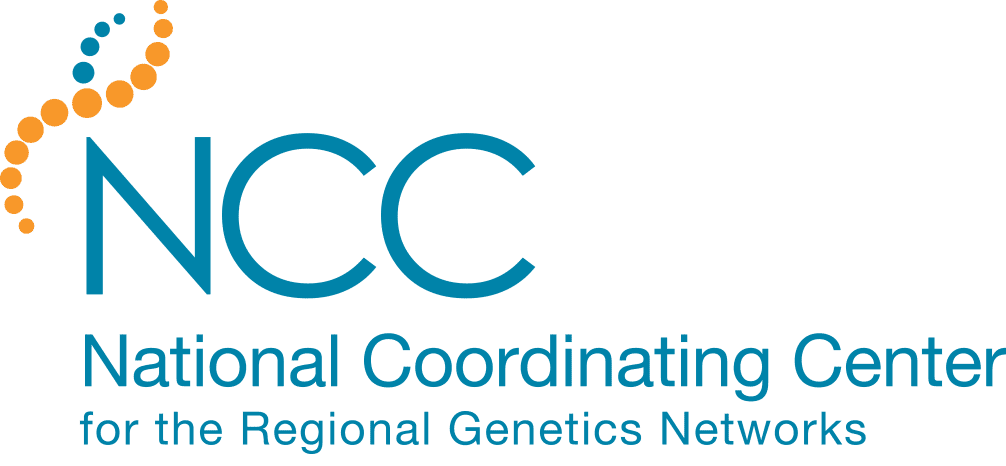From 2004 to 2024, the Health Resources and Services Administration (HRSA) funded the seven Regional Genetics Networks, the National Coordinating Center for the Regional Genetics Networks, and the National Genetics Education and Family Support Center.
With the conclusion of funding, the evaluation efforts of the system have ended. This page will not include data for the final funding year (2023-2024).
Telegenetics
82 clinics were supported by the RGNs to provide telehealth services from June 2022 to May 2023.
The seven Regional Genetics Networks (RGNs) support patients and healthcare providers to access genetic services via telehealth, also known as telegenetics. Support includes training of providers and technical assistance to clinics. By offering this support, the RGNs help improve access for patients who are unable to go to a genetics appointment in-person.
We use zip code data to determine if an individual or provider comes from an underserved area as defined by the Health Resources and Services Administration (HRSA). To learn more about our data collection and evaluation program, please click here.
Below are select data from the RGNs related to their telegenetic activities.
Telegenetics Training
Our Previous Year (June 2022-May 2023)
Providers Trained
To help educate providers on how to integrate genetics into their clinical practice, the RGNs have offered telegenetics training programs and technical assistance since 2017.
Trends from June 2017-May 2023
As noted above, the RGN system has been offering telegenetics training and technical assistance since at least 2017. This led to many providers being prepared for the change in care that was needed due to COVID-19. To learn more about what particular telegenetics training is implemented by some of the RGNs, explore WSRGN’s telegenetics training here.
Providers Participating in Telegenetics Trainings

92.6% (n=1,370) of providers trained were genetics specialists.
Clinics Supported
Our Previous Year (June 2022-May 2023)
Clinics Supported
The RGNs also provide support to clinics to help them offer telegenetics to their patients. Support can include providing funding or equipment to a site or offering technical assistance or quality improvement to a clinic.
In Year 6 (June 2022- May 2023), the RGNs supported sites both on the patient side (originating site) and on the provider side (distant site). Through the RGNs support, 82 sites were supported.
Trends from June 2017-May 2022
Telegenetics Clinics Supported

77.3% (n=576) of clinics supported were from an underserved area.
Please note that home sites supported are excluded from the visualization due to changes in how that data has been collected over the years.
Patients Seen via Telegenetics
Our Previous Year (June 2022-May 2023)
Patients Served
In Year 6 (June 2022-May 2023), the RGNs assisted patients in seeing providers via telehealth through clinic support (highlighted above).
Trends from June 2017-May 2023
As displayed below, the RGNs have worked to increase patients seen via telegenetics over the past six years. Due to changes in the RGNs’ goals, in Years 1-3 (June 2017-May 2020), patients were counted from providers who received telegenetics training/technical assistance or clinic support. In Years 4-6 (June 2020- May 2023), patients are counted from RGN-supported clinics.
Patients Seen via Telegenetics

54.7% (n=48,966) of telegenetics patients whose zip code was known were identified as coming from an undeserved area.
Last Updated on June 25, 2024
